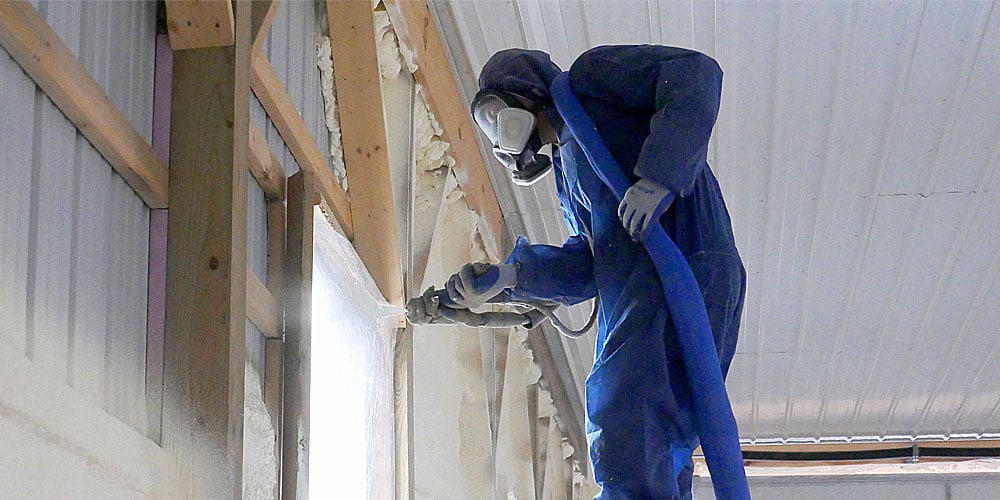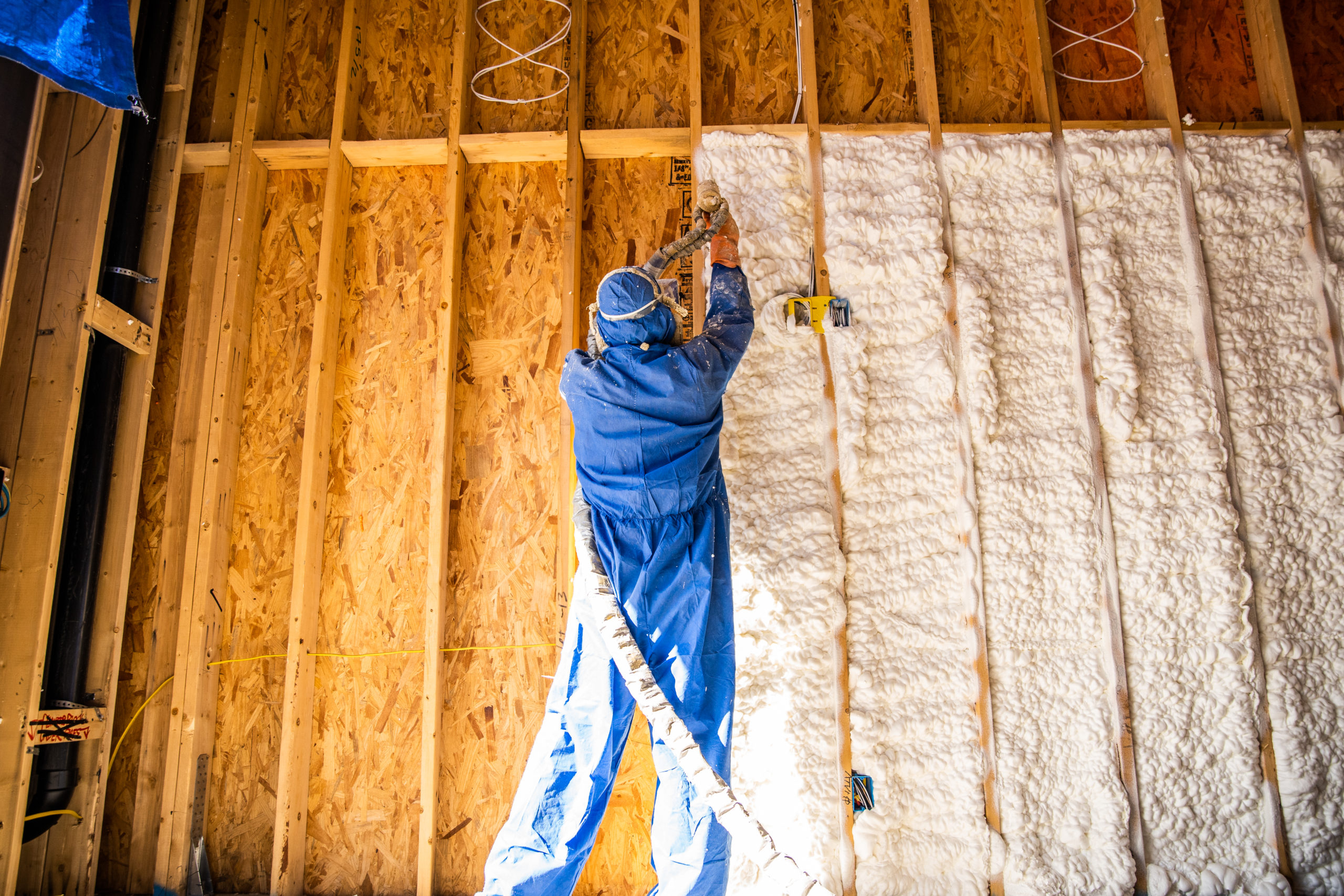The Ecological Impact of Spray Foam: Sustainability Considerations
The Ecological Impact of Spray Foam: Sustainability Considerations
Blog Article
Spray Foam: The Ultimate Service for Air Sealing and Insulation
Spray foam insulation has actually emerged as a leading remedy for efficient air sealing and thermal insulation, using an unique combination of residential properties that set it apart from standard approaches. Understanding the full extent of its advantages, installment procedures, and comparisons with other insulation kinds is important for making informed decisions.
What Is Spray Foam?
Spray foam is a versatile insulation product that incorporates the principles of air securing and thermal resistance to enhance energy effectiveness in structures. Composed largely of polyurethane or other similar compounds, spray foam is used as a liquid that broadens upon call with surface areas, creating a solid, continuous layer of insulation. This special home allows it to fill voids, fractures, and gaps that conventional insulation products might overlook, giving a remarkable air seal.
There are 2 main kinds of spray foam: open-cell and closed-cell. Open-cell spray foam is lighter and extra adaptable, supplying exceptional noise absorption and a lower R-value per inch - Spray Foam. On the other hand, closed-cell spray foam is denser, providing a higher R-value, moisture resistance, and added structural integrity to building elements
The application procedure commonly entails specific equipment, guaranteeing a smooth application that sticks to various substrates, including wood, metal, and concrete. This flexibility makes spray foam appropriate for both new constructions and retrofitting existing structures. Its capability to produce a closed barrier dramatically adds to minimizing power consumption and enhancing indoor air top quality, therefore making it a preferred option among home owners and building contractors alike.
Benefits of Spray Foam Insulation
One of one of the most substantial advantages of spray foam insulation is its phenomenal capability to create a constant air obstacle, which efficiently lessens power loss. Unlike conventional insulation materials, spray foam increases to load voids and cracks, ensuring that air leakage is dramatically minimized. This particular not just boosts power effectiveness yet likewise brings about lower utility bills gradually.
In addition, spray foam insulation offers exceptional thermal resistance, adding to a much more steady interior environment. Its high R-value per inch permits effective insulation in restricted areas, making it optimal for attics, wall surfaces, and crawl spaces. In addition, the moisture-resistant residential properties of spray foam aid prevent mold and mildew development, promoting much healthier living problems.
Another vital benefit of spray foam insulation is its sound-dampening top qualities (Spray Foam). It effectively reduces noise transmission between spaces, producing a quieter and a lot more comfortable home environment. The toughness of spray foam additionally attracts attention, as it does not droop or clear up with time, keeping its performance throughout its life-span
Just How Spray Foam Works
Recognizing exactly how spray foam insulation works is crucial for valuing its effectiveness in air sealing and thermal resistance. Spray foam insulation contains two primary parts: isocyanate and polyol material. When these elements are mixed, they undergo a chain reaction that causes the product to increase rapidly, creating a dense foam that fills up dental caries, fractures, and voids.
As the foam expands, it follows surface areas, creating an airtight seal that considerably lowers air infiltration. This particular makes spray foam insulation highly efficient at avoiding drafts and moisture infiltration, which can lead to energy loss and damages in time. Additionally, the closed-cell variant of spray foam provides exceptional thermal resistance due to its stiff structure, efficiently lessening warm transfer.
The special residential properties of spray foam permit it to adhere to uneven surface areas, making certain thorough insurance coverage and a smooth obstacle. Consequently, spray foam insulation not only boosts energy effectiveness yet additionally adds to boosted indoor air high quality by minimizing the buildup of allergens and toxins. Ultimately, recognizing the auto mechanics behind spray foam highlights its function as an exceptional choice for insulation and air securing in both business and domestic applications.
Installation Refine Introduction

Prior to installment, the space must be properly cleaned up and prepped, making certain that surface areas are cost-free from debris, wetness, and dirt. This step is essential since pollutants can jeopardize bond and total performance. As soon as the area is prepared, the application includes mixing the 2 parts of the spray foam, which expands upon get in touch with and fills voids successfully.
Trained experts should conduct the installment, using specialized tools to make sure uniform insurance coverage and optimal density. Safety and security safety measures, including using safety equipment and making certain appropriate air flow, are critical during this process. After application, the foam typically remedies quickly, creating a solid obstacle that boosts power effectiveness.
Comparing Spray Foam to Standard Insulation
When examining insulation choices, spray foam insulation sticks out in comparison to traditional materials such as fiberglass and cellulose. One of the primary benefits of spray foam is its exceptional air sealing abilities. Unlike fiberglass and cellulose, which can enable air infiltration, spray foam broadens upon application, filling up gaps and spaces to create an airtight seal. This results in boosted power efficiency, as much less warmed or cooled air escapes the home, bring about reduced energy costs.
Additionally, spray Look At This foam supplies a greater R-value per inch than traditional insulation types, providing more reliable thermal resistance in a thinner account. This particular is specifically helpful in spaces with restricted dental caries depth. Spray foam is resistant to wetness and mold and mildew development, which can be a considerable issue with cellulose and fiberglass, specifically in damp atmospheres.
Nevertheless, spray foam insulation generally brings a higher in advance expense than its standard counterparts. Homeowners should weigh this first investment versus lasting power savings and performance benefits. Eventually, while both insulation kinds offer their purpose, spray foam becomes a much more innovative service for modern insulation requirements, particularly in regards to air securing and thermal performance.

Conclusion
In summary, spray foam insulation stands for a highly efficient option for accomplishing ideal air securing and thermal resistance. Its special homes, consisting of dampness resistance and sound dampening, make it suitable for numerous applications in both new buildings and retrofitting projects (Spray Foam). The initial expenses may be greater compared to traditional insulation materials, the long-term advantages, such as significant power savings and enhanced indoor air high quality, validate the financial investment and underscore its value in modern-day structure methods.
Spray foam insulation has actually arised as a leading service for reliable air sealing and thermal insulation, offering a special mix of homes that set it apart from traditional approaches.Spray foam is a flexible insulation material that incorporates the concepts of air securing and thermal resistance to enhance energy effectiveness in buildings.When evaluating insulation choices, spray foam insulation stands out in contrast to standard materials such as fiberglass and cellulose. Ultimately, while both insulation types offer their objective, spray foam emerges as a much more innovative option for modern insulation needs, specifically in terms of air securing and thermal efficiency.
In recap, spray foam insulation stands for an extremely effective service for accomplishing optimum air securing and thermal resistance.
Report this page